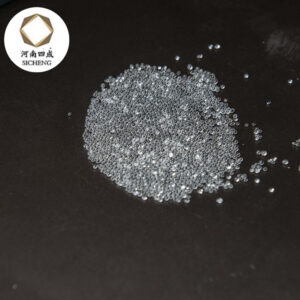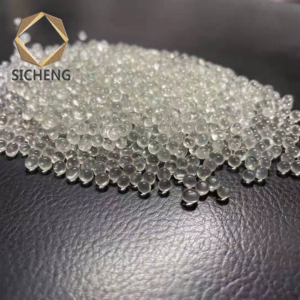The Production Process of Glass Beads
The production methods of glass beads can be roughly divided into two categories: powder method and melt method. In the powder method, the glass is crushed into the required particles. After sieving, at a certain temperature, the glass particles are melted through a uniform heating zone to form beads under the action of surface tension. The melt method uses high-speed airflow to disperse the glass liquid into glass droplets, which form microbeads due to surface tension.
Heating method: For general or higher melting temperature glass, gas heating or oxyacetylene flame and oxyhydrogen flame heating can be used; for glass with high melting temperature, DC arc plasma device can be used for heating. Powder method, In the beginning, the most used powder method was proposed by the US patent. The fine glass powder as raw material is placed in the reservoir and flows to the hot zone of the high-efficiency gas nozzle. Here the glass beads are controlled by a strong flame and pushed into the huge expansion chamber of the device. Due to the heating effect of the flame, the glass beads melted almost instantly. Then the particles quickly reduce the viscosity and form into an ideal spherical shape that meets the requirements under the action of surface tension.
The production process of glass beads:
1. Coarse grinding: Put the spherical blank into the upper and lower two concentric annular grinding disks with the same size and triangle cross-section with the same size of the blank, add oil, and coarse abrasive; the upper grinding disk rotates and the lower The grinding disc does not move. The above ball mill is called a rough mill.
2. Embryo making: various spherical blanks are made by various technological methods.
3. Fine grinding: Put the rough finished rough into the fine grinding machine; add low viscosity oil and fine abrasive, grind to standard size;
4. Cleaning: Every time the rough grinding is completed, the oil and coarse abrasive residue sticking to the ball surface must be washed.
5. Polishing: The process is similar to coarse grinding and fine grinding.



